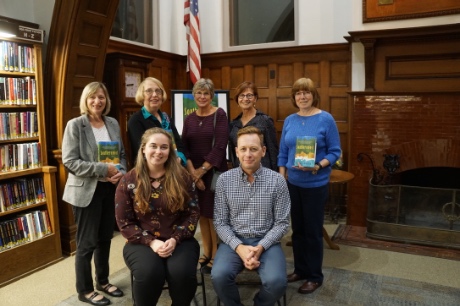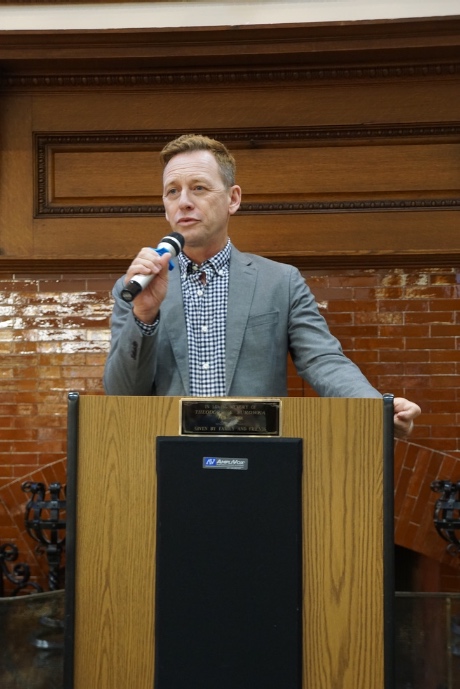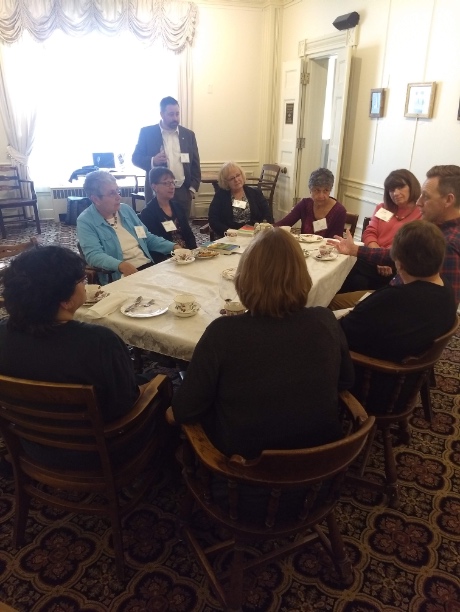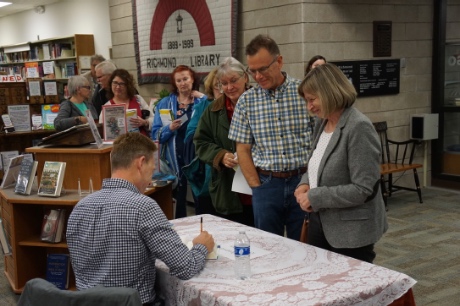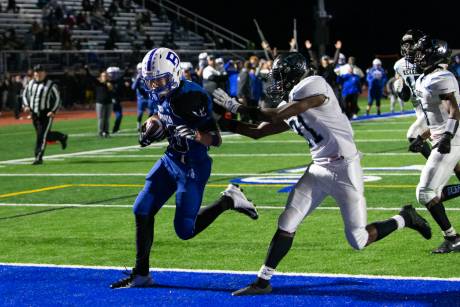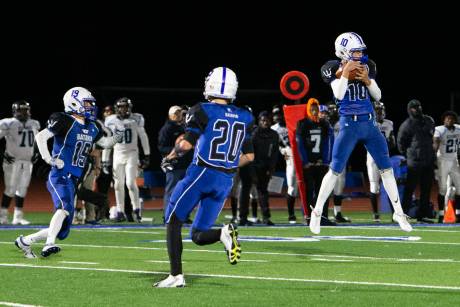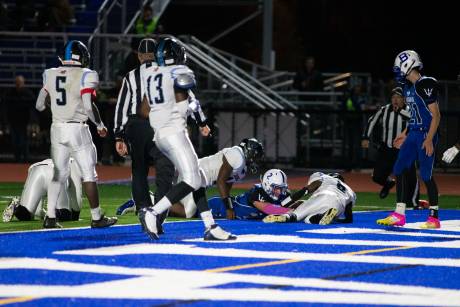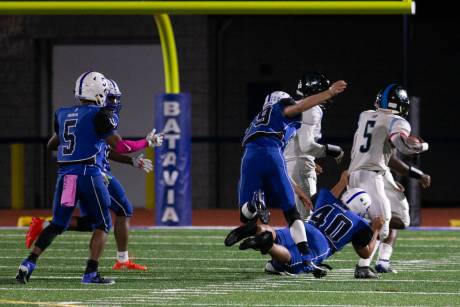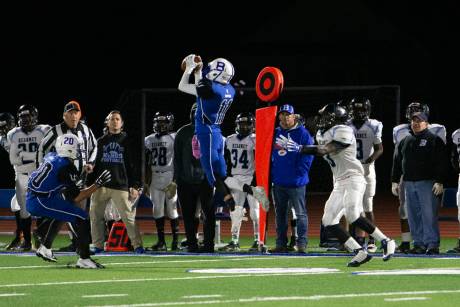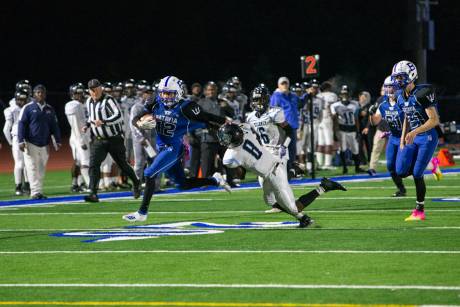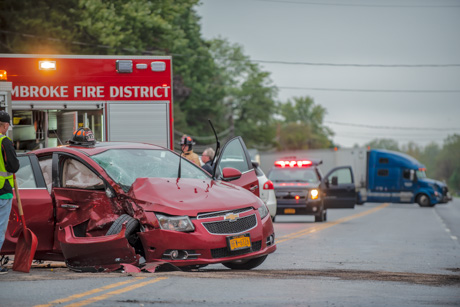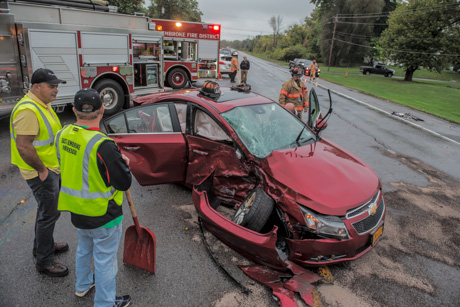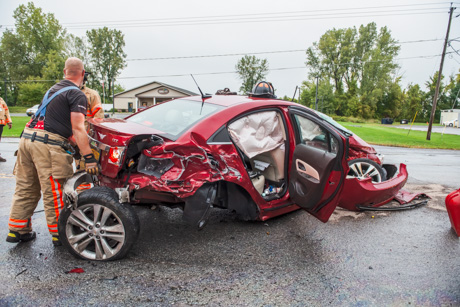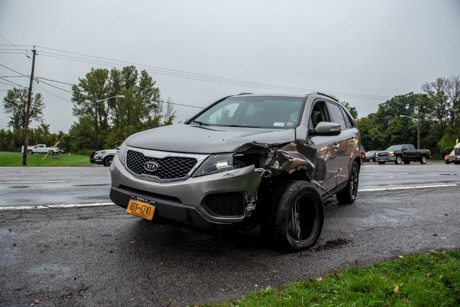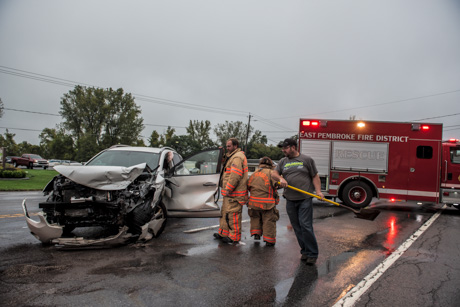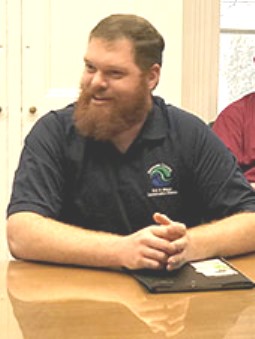In defending Antwan Odom before a jury of nine women and three men, including one person of color, Buffalo attorney Frank Housh laid out a seemingly convincing case during closing arguments this afternoon in Odom's first-degree assault case.
If body language and facial expressions are any indication, many jurors appeared sympathetic to the defense.
Housh said the alleged victim in the case, Ray Leach, was the aggressor, that he threw the first punch, suggesting he caught his client by surprise as he put down his phone; that Leach was not seriously injured, and that the prosecution's case was built on misrepresentation and misinterpretation of the evidence.
In response, point-by-point, District Attorney Lawrence Friedman methodically tore apart Housh's theory of the case, as he typically does to defense attorneys when he makes his closing arguments.
Odom's future will soon be placed in the hands of a Genesee County jury that seemed engrossed in the case as it was presented to them during this week's testimony and arguments.
And arguments abounded.
Housh and Friedman clearly do not like each other.
At one point this afternoon, after a break for lunch, Friedman entered the courtroom from the back hallway -- a hallway that leads both to back door of the DA's suite of offices and the judge's chambers -- while Judge Charles Zambito was not in the courtroom (and neither was the jury), Housh asked, "Is there something going on back there I don't know about?"
Friedman responded, "I thought we weren't talking to each other?" before sitting down at his table.
"I'm asking if there were ex-parte communications."
Friedman sat stone-faced looking straight ahead, with two young aides sitting to his left, until Zambito entered the courtroom, at which point Housh said he wasn't suggesting, respectfully, anything inappropriate but he wanted to inquire whether there was an ex-parte communication. Zambito told him he was alone in his chamber with his clerk.
At another point, again, with the jury out of the room, just before Odom took the stand, Housh was at the lectern ready to examine his witness, Odom, when Friedman silently walked by.
"I'm sorry," Housh remarked crossly, "did you say something to me?"
"I did not," Friedman said.
And so it went, continuing a course of antagonism in the case going back to at least May. That's when Housh, in open court, suggested that Friedman and Zambito might somehow collude against his client. His thoughts in this regard steered Housh to conclude that if he accepted a plea deal -- that could have meant no jail time for Odom -- he couldn't trust that Zambito would follow through and grant Odom youthful offender status.
It was after that hearing that Housh made statements about Ray Leach that led Friedman to seek a gag order on the attorneys in the case, prohibiting them from speaking to reporters. The Batavian objected to the gag order and Zambito lifted it but from that time on, Housh has repeatedly accused Friedman of filing an ethics complaint against him with the State Bar. Housh maintains that Friedman's actions have placed him in the position of defending both himself and his client at the same time, while constantly worrying that anything he does in court will lead to a further ethics complaint to the bar by Friedman.
On Tuesday, Friedman denied Housh's accusation, calling it "ludicrous."
The relationship between the two attorneys has been rocky at every court appearance since May. The trial, even at times with the jury in the room, with Housh often acting exasperated and petulant, has been no different.
The morning started in conflict seven minutes after Dr. Lori Ferris took the stand.
Friedman attempted to enter into evidence medical records from the University of Rochester Medical Center and Housh objected, claiming he hadn't seen the exhibit. Friedman said he had provided the defense the documents. Housh said he couldn't trust Friedman to have provided him with the same documents Friedman was now entering into evidence.
After some bickering over the documents, Housh said Friedman hasn't provided the proper foundation in his questioning to get the documents entered into evidence. Friedman asked Ferris some questions about the documents and then Housh again objected and there was a debate about whether the documents were self-authenticating. Zambito ruled they were.
At one point, Housh turned on his heels, away from the bench, with his thick-rimmed, tortoise-shell glasses slipping down his nose, and said, "Let's proceed judge. I'm tired of fighting about every little thing."
That caused Friedman to raise his eyebrows and glance at him askance.
Dr. Ferris treated Leach for his wounds a few days after the Aug. 4, 2018 incident on Ross Street in Batavia and has continued to see him every few months since.
She testified that the most severe of Leach's 12 wounds were on his right thigh. She said Leach's wounds were consistent with those that would be produced by a knife.
A week later the wound was less swollen and she cleared him for football practice.
When she saw him on Sept. 7, the wound was nearly healed although Leach reported numbness near the wound.
For the first time, he also reported numbness in his fingertips. Ferris concluded this was from nerve irritation in Leach's elbow that probably had nothing to do with the Aug. 4 incident and she told him to not rest on his elbows. She also prescribed medication for mitigating pain and numbness due to nerve damage.
She saw Leach again in April for his college physical exam and in July for a follow-up. In both cases, Leach reported to her continuing nerve numbness and pain.
During cross-examination by Housh, Ferris said that Leach's nerve damage was due to sensory nerves and not motor nerves (nerves that control muscles). She said Leach suffered no loss of muscle control or strength.
Housh also had Ferris review a medical record from Leach's Aug. 4 admission into an emergency room and tell the jury that a Dr. Patel examined Leach and found no serious injury.
Ferris testified that the typical maximum dosage of the medication she prescribed to Leach is 1,200 milligrams three times a day. She started Leach at 100 milligrams three times a day, then at a later visit bumped him up to 200 milligrams three times a day, and then 300 milligrams three times a day.
She told Housh that she never saw any reason to refer Leach to a specialist for his nerve damage.
Housh asked if there was any objective evidence that Leach had any continuing pain and Ferris agreed that she only had Leach's subjective word on the type and level of pain he said he suffered and that there was no objective test to confirm the pain or discomfort.
Ferris was the final prosecution witness.
After the prosecution rested, Housh made a motion to dismiss both charges against Odom, assault in the first degree and criminal possession of a weapon in the fourth degree. Housh argued that the prosecution had failed to present evidence that Leach suffered serious physical wounds or that Odom had possessed a knife.
Friedman argued that Leach's 14-months-and-counting of physical pain constitutes, under the legal definition, a serious physical injury.
After a recess, Zambito ruled against the motion, but said the jury could be instructed on considering a lesser-included offense, such as attempted assault or assault in the second degree. Housh put on the record that he objected to this ruling.
Odom, dressed in a slim-fitting, charcoal-gray suit with a bow tie, white shirt, and dress loafers, took the stand (For the record, Housh wore to court today his apparently favorite blue blazer while Friedman was dressed in a navy blue suit).
Unlike Leach, who mumbled through some of his testimony on Tuesday, Odom, who had about a dozen supporters in the gallery, including friends and family, spoke clearly and directly to both attorneys as he answered questions.
Odom testified that he and Leach are no longer friends. At first, he said the friendship ended when Leach tried going after his girlfriend. Then he said the friendship ended on Aug. 4, 2018.
He said the trouble last summer with Leach started when Leach was on vacation and apparently heard that somebody had broken into his room and stole $50 and perhaps marijuana.
He said he received Facebook messages from Leach. At one point, he said a message said, "If I find out whoever ran into my room, I'm going to end him."
Later, under questioning from Housh, Odom said that Leach said, "I'm going to end you."
Odom said he took the message from Leach as a threat against him and he also testified that he believed Leach kept a gun under his bed.
When Leach arrived home on Aug. 4, according to Odom, Leach drove past his house and called him a well-known race-based slur. He then parked and walked up to his house while Odom was playing outside with his niece and nephew, and asked him if he wanted to "do it here or do it somewhere else."
Odom said, under questioning, that he believed Leach could possibly have a gun and didn't want a confrontation with him in front of his niece and nephew.
He testified that his father, grandmother and sister were also present.
The two teenagers walked across the street toward Leach's house in a driveway next to Leach's home; Odom put down his phone, at which point, he said, Leach punched him.
He testified that he doesn't remember anything that happened after that and the next thing he remembers is waking up in the mental health ward of a hospital with his parents by his side.
Housh asked him if he fought back.
He said he didn't remember.
Housh asked him if he thought he would have fought back.
He said yes.
Under questioning by Housh, he said he never carried a knife and doesn't know where he would have gotten a knife, even a small pocket knife, to use against Leach.
Despite a police search of the area, no knife was located and no knife has been produced.
In cross-examination, Friedman zeroed in on Odom's contradiction about when he ceased to be friends with Leach. He questioned why Odom would follow Leach to his house when he believed Leach wanted to kill him. He questioned why, with all the people around him, nobody called the police.
"All these people standing there and you say somebody is going to kill you and nobody called the police?" Friedman asked incredulously.
Leach testified that Odom said, when they arrived in the driveway, "After this fight, it's over."
Odom said he didn't say that.
"Oh, you don't remember that?" Friedman said.
"I don't remember saying that because I didn't say it," Odom said.
While Friedman was questioning when one or both of them dropped their phones, his voice rose and Housh objected to Friedman's tone and said he should modulate his voice. He accused Friedman of "badgering" the witness.
Zambito overruled the objection, saying he gave both attorneys leeway to engage in the examination as they deemed appropriate.
Odom testified that he didn't steal anything from Ray Leach, that he doesn't remember stabbing Ray Leach, either aggressively or in self-defense, and that he doesn't know what happened after the first punch.
In both examination and cross-examination, Odom discussed an arrest in the Town of Sweden for what was referred to as a "DWI arrest." Odom testified that he had smoked marijuana the day before he was stopped for speeding with four other people in the car. Police believed one of the occupants was underage. Odom was charged with driving under the influence with a person under age 16 in the car.
That charge was either dismissed because it wasn't true (as it came out in Housh's questioning) or because it was part of a plea deal (under Friedman's questioning). Odom said the person who was supposedly under 16 lied about his identity, using his younger brother's name. The person in question was actually 17.
Friedman tried to make an issue of the fact that Odom never told police that there was anybody under 16 in his car when he was arrested. Odom said he didn't understand the charge until he was in Sweden Town Court.
Odom testified that he smoked marijuana on the morning of Aug. 4. Friedman asked if was true that Odom smoked marijuana on a daily basis. Before he could answer, Housh objected and Zambito sustained the objection.
After Odom's testimony, the jury was dismissed for lunch. There was discussion in open court about what language, and what portions of the law, Zambito would cite when instructing jurors on the law and the evidence of the case. Typically, this discussion takes place in the judge's chambers.
Much of it centered around how to instruct the jury on a justification defense.
The attorneys sparred over the meaning of "mutual combat." Housh maintained that in New York, "mutual combat" refers to sporting events, such as boxing or mixed martial arts. Friedman maintained that mutual combat referred to any circumstance where both opponents agree to fight.
During this exchange, one of Friedman's staff approached him and whispered something.
Right after Zambito asked Housh a question, then Friedman spoke up and said he wished to address an issue with the court. In a petulant tone, Housh said, "(Zambito) asked me a question and you're going to answer?"
Friedman said that it had come to his attention that there were jurors in the hallway eating their lunch while there were also members of Odom's family in the hallway.
Zambito clarified that jurors had been dismissed for lunch and they were free for that hour to go where they wished and they had already been instructed not to discuss the case with anybody. Friedman shrugged and accepted the explanation.
When the jury returned after lunch, Housh started his closing statement by complimenting the jury on their attentiveness during the trial.
"For you to find my client guilty of anything you have to believe Ray Leach," he said. "You have to believe Ray Leach is a credible and honest witness upon whose good word you can rely to convict my client of a very, very serious crime and you can't do that. And you don't have to take my word for it. You just can't. I'm going to talk about how he denied his previous testimony, his previous sworn statement."
He said, "What do we know about Ray Leach? 'He had a great season.' We know that because that was the first words out of the DA's mouth."
He said that Leach admitted he would lie if it served his own purpose and that he didn't call police about his money being stolen because he "wasn't that kind of guy."
"The DA had no problem," Housh said, "with Leach taking the law into his own hands."
Leach, he said, wasn't a credible witness because he was confrontational on the witness stand.
Housh said that if there was a lot of blood because of the stabbing, where was the evidence? He pointed to a crime scene photo and questioned why it didn't show a lot of blood. If there was a lot of blood, why didn't the prosecution produce Ray Leach's clothing covered in blood?
"Why do you think the DA didn't bring it out for you to see?" Housh asked. "Because there is no blood on them and he wanted you to see all the blood he could, but he couldn't be bothered to show the clothing the victim was wearing that night because it doesn't fit his theory of the case."
He said Dr. Ferris testified that Leach didn't receive serious injuries, that Dr. Patel said he didn't receive a serious injury.
Leach, the star running back for the Batavia Blue Devils, gained 3,000 yards on the season, Housh noted, which is further proof he wasn't seriously injured.
The prosecution, he said, is claiming Leach suffered nerve damage but there is no evidence that Leach suffered nerve damage other than his say-so that he suffered nerve damage.
He called the cuts Leach received "superficial."
As for the knife, he said Leach testified it was a small pocket knife, which is not something capable of causing death or serious physical injury. And clearly the knife didn't do that, Housh said because Leach was cut 12 times and still able to play football and gain 3,000 yards on the season.
"It all comes down to the word of Raymond Leach, who lies under oath about things that will help him and who doesn't call police when he thinks he has been burglarized and who says he will take care of it himself," Housh said. "That is their credible witness, their case, their gold standard."
As Friedman stood before the jury to give his closing statement, he said Ray Leach was credible.
"You saw how Ray Leach testified," Friedman said. "You saw the manner he testified. I firmly believe every one of you paid attention and listened to him and you listened to what he said and saw how he said it and you evaluated whether he told the truth and I submit to you that in light of all the evidence that I'm confident that you believe him."
Friedman said Leach's testimony did not contradict his prior statements.
"There is no evidence that he previously testified falsely," Friedman said. "He certainly didn't admit that he lied under oath."
At multiple points in his open and closing statements, Friedman said, Housh said his client was beaten unconscious but at no point during the trial was evidence presented that Odom was ever unconscious.
As for the lack of a knife, Odom, he said, had ample opportunity before police arrived, to dispose of the knife.
As Friedman discussed the "convenient" assertion that Odom couldn't remember anything after getting punched, and that only Odom has anything to gain or lose by the verdict, Housh jumped up and said, "Objection. Motion for a mistrial."
At which point, Zambito asked the jury to leave the courtroom and then the attorneys argued about Friedman's line of summation. Housh claimed that Friedman was trying to shift the burden of proof to the defense. Friedman noted, correctly, that he had said explicitly that he wasn't shifting the burden of proof.
Zambito agreed with Friedman and the jury returned.
Resuming his closing statement, Friedman noted that the only suggestion that Leach owned a gun was from Odom's testimony.
He said, "According to the defendant, Ray Leach came to his house and calls him out and the defendant is afraid that he is going to be killed by Ray Leach, he says he knows he has a gun and he thinks Ray Leach is going to kill him, and what does he do to avoid being killed by Ray Leach, he leaves with him. He doesn't yell out, 'Ray Leach has a gun and he's going to kill me. Call the police.' He goes with him right next door to the victim's house."
Friedman said the initial confrontation was combat-by-arrangement, which negates the contention that Odom cut Leach in self-defense.
"He says he didn't have a knife but he was justified in stabbing Ray Leach 12 times," Friedman said. "He got punched and that's it. He doesn't remember anything else. How convincing is that?"
As for the issue of serious physical injury, the standard isn't whether Leach could continue to play football, that he could gain 3,000 yards. The standard is that Leach continued to suffer from pain from his wounds.
The standard for serious physical injury is longer-term of protracted impairment of health.
"As of Jan. 3 of this year, five months after this happened, he was still having nerve symptoms," Friedman said.
Yes, Leach didn't have further tests by a specialist because the doctor treating him knew she could treat him effectively herself. That doesn't mean, Friedman said, that the injuries don't meet the legal standard for serious injury.
And while one doctor said Leach didn't suffer a serious injury, there is no consistent definition in the medical community for serious injury. In a court of law, there is and in this case, the definition is met by the evidence presented by Dr. Ferris.
As for Housh's contention that these were superficial cuts, Friedman said the jury had seen the photos of the cuts.
"They are not anything you would call superficial," Friedman said.
As for Leach's great season as a running back for the Batavia Blue Devils, that doesn't mean he wasn't seriously injured.
"Impairment of health doesn't mean totally disabled," Friedman said. "It doesn't mean that you are unable to play football and it doesn't mean you are not able to play football well. He had nerve damage to his leg and he suffered through that nerve damage. He played through it. He had medication to deal with it and when that wasn't working he got something else. When that wasn't working, the doctor upped the dose, and when that didn't work she upped the dose again. That is impairment.
"His mother testified that football is his life," Friedman added. "He was determined to be at practice. He was determined to get back and play. He was determined to get back on the field. Yes, he had a great season but that doesn't mean his physical condition wasn't substantially impaired.
As for the knife, Friedman said it doesn't need to be a big knife to be a weapon capable of causing serious physical injury. Echoing that a former corrections officer who had been on the jury panel, but not selected for the jury, said during jury selection, many items can be turned into a weapon capable of causing serious physical injury.
The proof that the knife, in this case, was capable of causing serious physical injury is the fact that it did cause serious physical injury, Friedman said.
To the self-defense claim, the fact that Odom apparently lost the fight doesn't mean he can then attack Leach with a knife, Friedman suggested, and further undercutting the self defense claim is that Odom had an opportunity to retreat (one of the legal standards in a self-defense claim) and that the first wound Leach received was a stab in the back.
Zambito was supposed to give jury instructions this afternoon but apparently there is still wrangling between the attorneys over what the instruction will be so those instructions are delayed until Thursday morning. After the instructions, the jury will begin deliberations.
